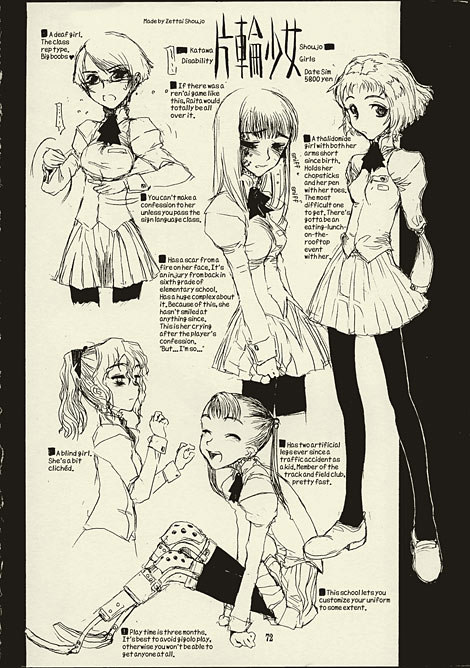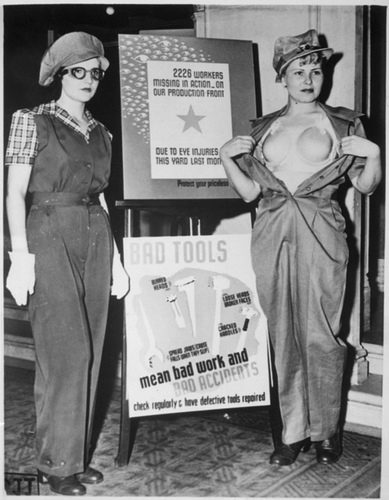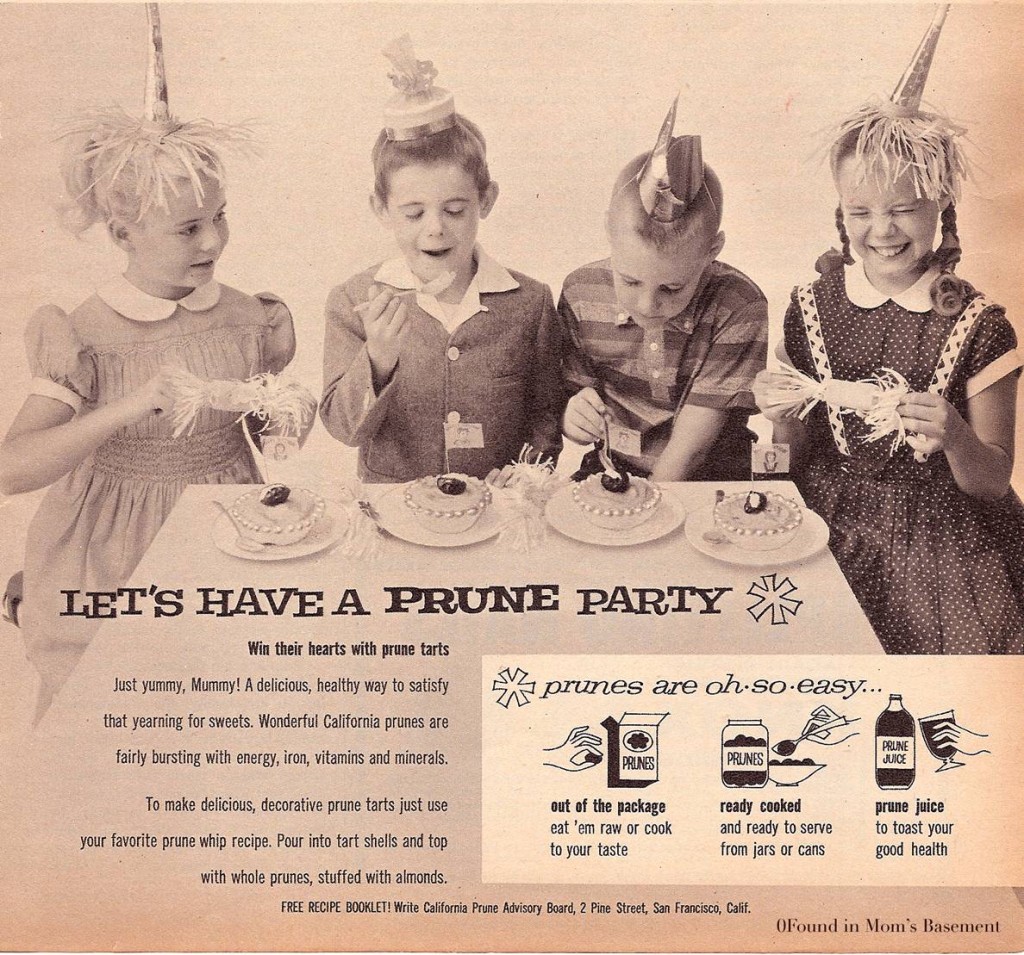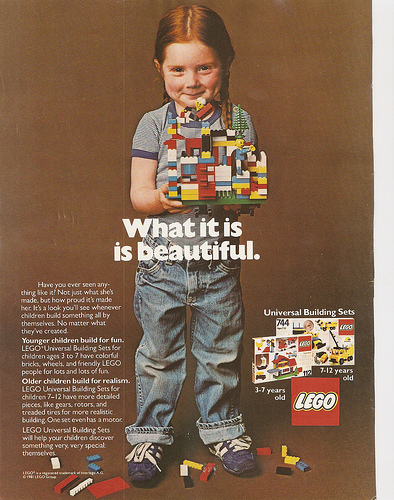Months ago Ryan emailed us about a video game called Katawa Shouju (sometimes translated as Disabled Girls or Crippled Heart). From the website:
Hisao Nakai, a normal boy living a normal life, has his life turned upside down when a congenital heart defect forces him to move to a new school after a long hospitalization. Despite his difficulties, Hisao is able to find friends—and perhaps love, if he plays his cards right.
A design sketch of the girls:

An article at GameSetWatch refers to the game having a “perverse and contemptible premise.”
Ryan says,
A lot of the discussion about this game seems to be about the disabilities of the girls and how disgusting it is. I don’t really share that opinion personally…I don’t really see what’s wrong with casting a girl with burn scars on her face as a love interest within a game. Or for that matter , what’s wrong with casting a girl with no legs or deformed arms as a love interest? I mean, it’s one thing to fetishize…but on the other hand it might be good for someone who has similar disabilities to feel like they can be desirable.
It’s an interesting point. I suspect there are things about the video game I would find disturbing, and if the girls are portrayed in a ridiculing way, that’s problematic. But some of the reactions to it seem to assume that having a person with a disability as a potential love interest is automatically ridiculing them. But why would that be? Why would it be more “contemptible” to portray these women as romantic/sexual interests any more than other women in similar games? Some of the objections to the game are based on the idea that you must be laughing at people with disabilities if you show them as sexy or romantically interesting. But that’s based on the idea that of course they can’t really be sexy, so it’s mean to portray them that way…which points out some interesting assumptions about people with disabilities and their romantic and sexual lives.
Thoughts?
UPDATE: Reader Magnetic Crow says,
I think what bothers me about this is the premise of a “school for disabled kids only”, the fact that the girls are ‘othered’ from the get-go by this isolation, and the fact that this is probably being made to play to an exploitative fetish. Were it any other dating sim, and one of the girls available for dating just happened to have been born with no arms, or had lost her legs in a traffic accident, I would feel a lot more comfortable.
Other posts about video games: Evony’s boob ads, gender and race in RuneScape, Border Patrol game, Miss Bimbo and Sexy Beach 3, Rape Simulator, My Life, Medal of Honor’s all-White military, a game called Battle Raper that is exactly what it sounds like, blaming moms for video game addiction, sales of Grand Theft Auto, and “military entertainment.”
We also have a posts of a girl with a limp as an ugly friend, Goodyear ad featuring a sad kid in a wheelchair, nude calendar of Paralympic athletes, dolls with Down’s Syndrome, models with disabilities in a British Top Model show, representing people with disabilities, what is an “alt model”?, and amputee model Viktoria.








